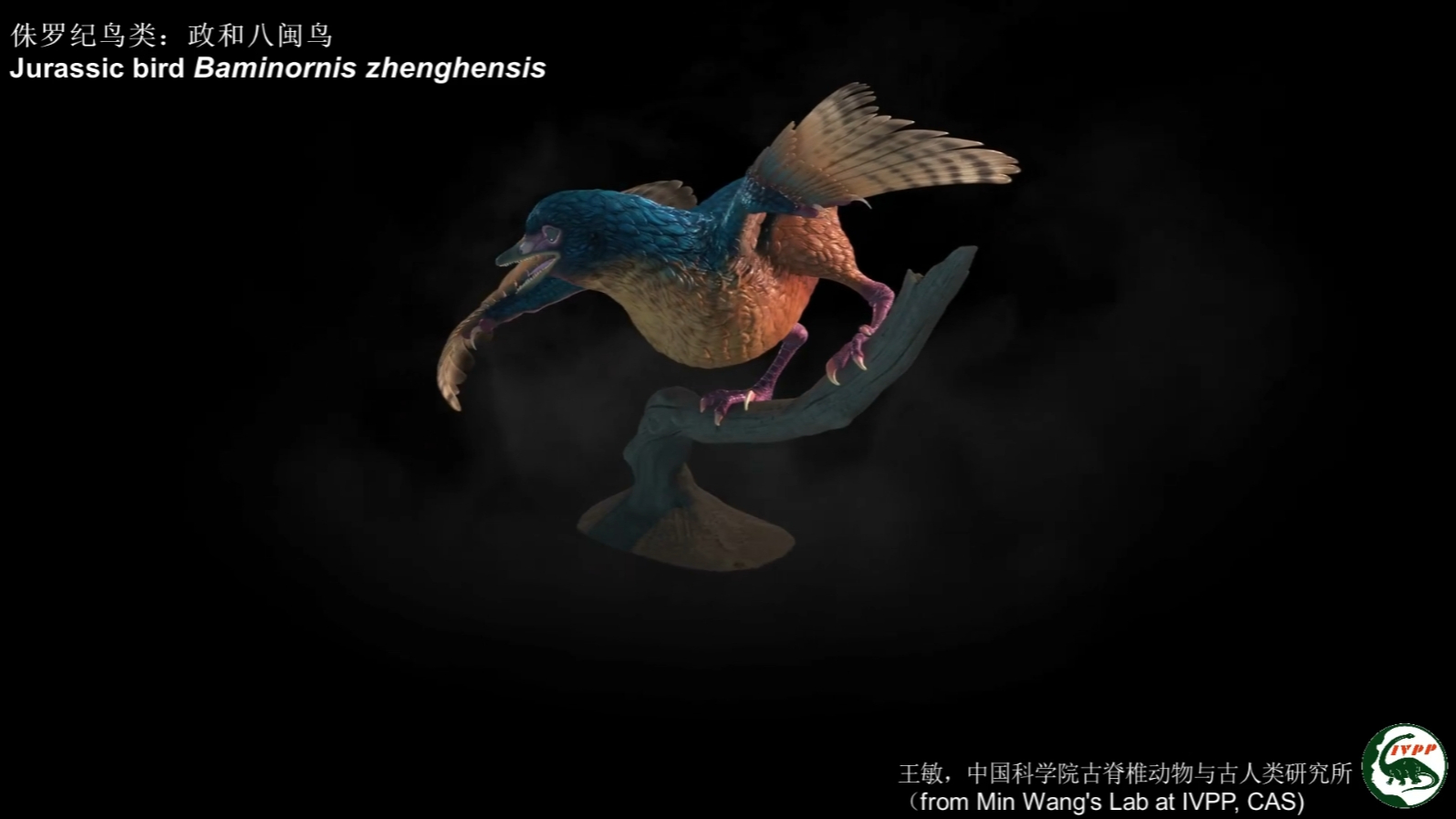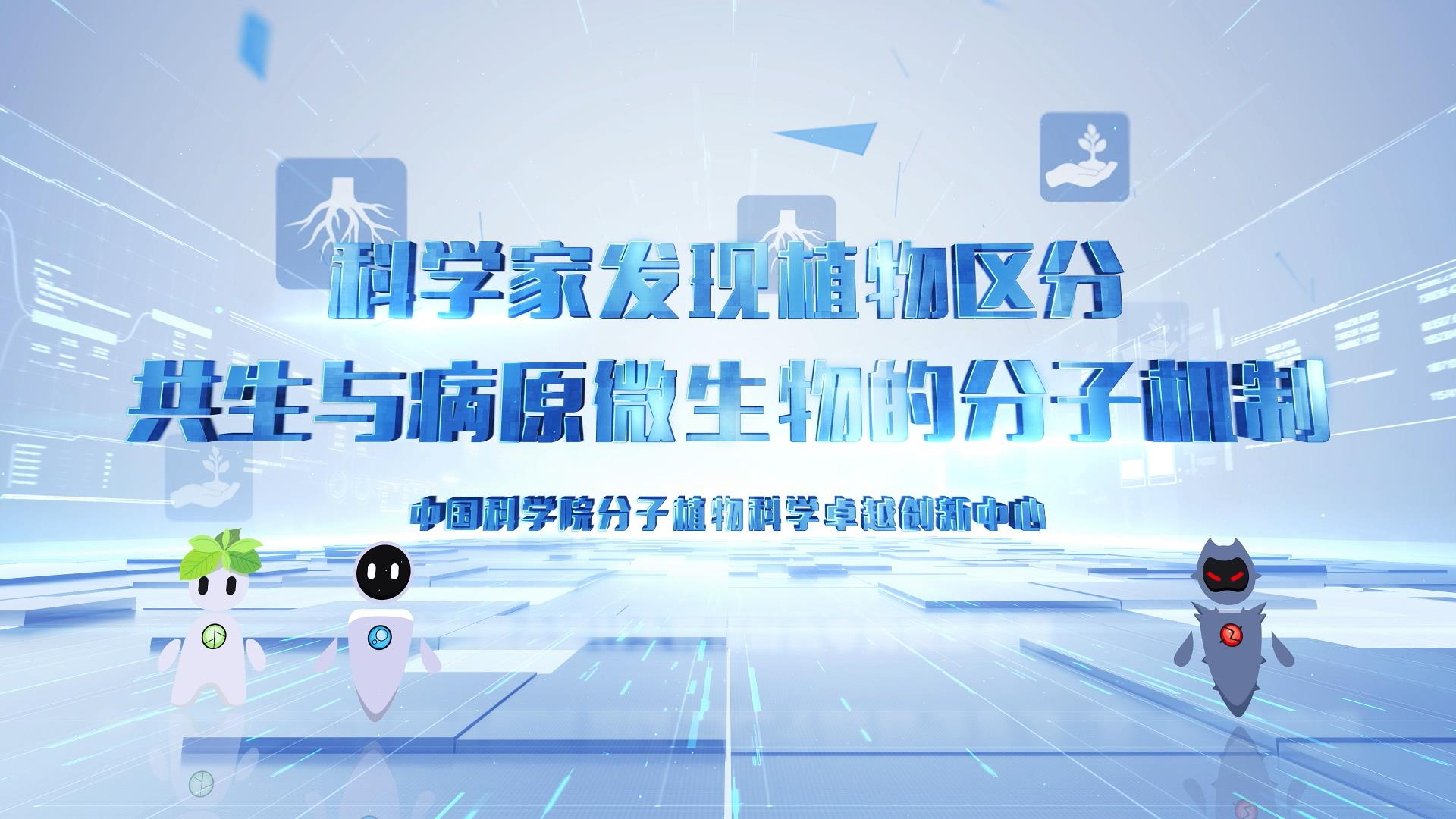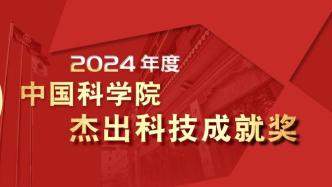

In 2023, there will be a total of 79 additional places for academicians of the Chinese Academy of Sciences. In 2023, the total number of additional candidates for academicians of the Chinese Academy of Engineering shall not exceed 90.
The selection of academicians of the Chinese Academy of Sciences and the Chinese Academy of Engineering in 2023 started on May 31.
On May 31, the official websites of the Chinese Academy of Sciences and the Chinese Academy of Engineering both released announcements or notices such as the "Guidelines for the Selection of Academicians", "Recommendation or Nomination of Relevant Academician Candidates" and "Recommendation or Nomination of Relevant Foreign Academician Candidates".
In 2023, there will be a total of 79 additional places for academicians of the Chinese Academy of Sciences. One of the qualification requirements for candidates is, "engage in research work in natural science, technical science and engineering science, have made important systematic and creative achievements in the field of science and technology, and have made outstanding contributions to China's science and technology or the progress of human civilization." contribute."
In 2023, the total number of additional candidates for academicians of the Chinese Academy of Engineering shall not exceed 90 . The eligibility requirements are: "Have made significant and creative achievements and contributions in engineering science and technology, love the motherland, have a decent style of study, and have good conduct. Senior engineers, researchers, professors or experts with equivalent titles with Chinese nationality may be nominated for the candidate."
The official website of the Chinese Academy of Sciences also released the " Notice on Strictly Disciplining the 2023 Academician Co-option Work ". The notice stated that scientific research integrity and disciplinary standards should be taken as the bottom line, and candidates with academic fraud and other behaviors should be “vetoed with one vote”; the responsibility of academician recommendation should be further consolidated. Consciously resist inappropriate behavior during the co-option process. If you find that the candidate has misbehavior, please report it to the director of the standing committee of the department in writing and with your signature ; if you find that the academician has misconduct, please report it to the director of the scientific ethics construction committee of the department in writing and with your signature .
News attachment:
Guidelines for the selection of academicians of the Chinese Academy of Sciences in 2023
The academician system is an important system established by the party and the country to establish respect for knowledge, respect for talent orientation, and gather outstanding talents to serve the country. Academicians of the Chinese Academy of Sciences (hereinafter referred to as academicians) are the highest academic titles in science and technology established by the state.
In order to do a good job in the selection of academicians in 2023, in accordance with the spirit of deepening the reform of the academician system and relevant regulations, the "Guidelines for the Selection of Academicians of the Chinese Academy of Sciences in 2023" was formulated.
1. Subject direction and quota allocation plan for additional fields
In 2023, there will be a total of 79 additional places for academicians of the Chinese Academy of Sciences.
(1) Department of Mathematical Physics
1. Four students in mathematics, including no less than 2 in basic mathematics and no less than 1 in applied mathematics.
2. Physics I (including condensed matter physics, optics, acoustics and atomic and molecular physics, etc.) 3 candidates, including 1 in acoustics, and no less than 2 experimental workers among the 3 quotas.
3. Physics II (including high energy physics, nuclear physics, etc.), mechanics and astronomy 4.
4. Quantum information 1.
5. 1 candidate in physics (experiment) and optoelectronic information (emerging and interdisciplinary fields).
(2) Department of Chemistry
1. Inorganic chemistry, analytical chemistry, environmental chemistry 4, including nuclear and radiation chemistry 1.
2. Organic Chemistry, Polymer 3.
3. 3 in physical chemistry and chemical engineering.
4. 1 winner of carbon-neutral chemical and chemical transformational technology.
5. One candidate in chemical biology and major drug creation (emerging and interdisciplinary fields).
(3) Faculty of Life Sciences and Medicine
1. 4 students in basic biology.
2. Medicine 4.
3. 4 in Agronomy, Ecology and Evolution, including 1 in Biological Taxonomy.
4. One person for the prevention and control of emerging infectious diseases and biosafety.
5. One candidate for Bioinformatics and Smart Medicine (emerging and interdisciplinary fields).
(4) Department of Earth Sciences
1. Geology I (including sedimentology, paleontology, structural geology, oil and gas geology, Precambrian geology, etc.) 2.
2. Geology II (including geochemistry, mathematical geology, mineralogy, ore deposit and mineralogy, petrology, Quaternary geology, hydrogeology, engineering geology, etc.) 2.
3. Geography (including physical geography, human geography, geographic information science, remote sensing, soil science, ecological environment, etc.) 2.
4. Atmospheric and oceanic sciences (including atmospheric science and marine science) 2, of which marine science is not less than 1.
5. Geophysics (including solid geophysics, space physics, geodesy, etc.) 2.
6. Planetary geological environment and exploration 1.
7. One candidate for Earth System Modeling and Artificial Intelligence (emerging and interdisciplinary fields).
(5) Information Technology Science Department
1. Information I (including computer science and technology, microelectronics science and technology, control science and engineering, instrumentation and sensing, etc.) 4, including 1 computer theory and artificial intelligence.
2. Information II (including electronic science and technology, optical engineering, information and communication engineering, etc.) 3 candidates.
3. Cyberspace Security 1.
4. The mathematical basis of information science and technology 1 (emerging and interdisciplinary fields).
(6) Department of Technology and Science
1. Materials (including materials physics, materials science and metallurgy, materials chemistry and functional materials, materials processing and structural materials, nuclear materials and special materials, etc.), including 1 high-end equipment structural materials and processing technology.
2. Engineering I (including mechanical engineering, power engineering and engineering thermophysics, electrical engineering, aerospace science and technology, weapon science and technology, nuclear science and technology, etc.) 4 candidates.
3. Engineering II (including mechanics, architecture and urban and rural planning, civil and transportation engineering, water conservancy engineering, mining, oil and gas engineering, etc.) 3 candidates.
4. 1 ship and ocean engineering.
5. One candidate for medical-industrial integration (emerging and interdisciplinary fields).
(VII) Special recommended fields
The quota is 6 people, to be arranged separately.
2. Candidate qualifications
According to the "Implementation Measures for the Selection of Academicians of the Chinese Academy of Sciences (Trial)", academician candidates should be Chinese citizens who meet the following basic conditions.
1. Abide by the Constitution and laws, love the motherland, have good conduct, and have a decent style of study.
2. Engage in research work in natural science, technical science and engineering science, have made important systematic and creative achievements in the field of science and technology, and have made outstanding contributions to China's science and technology cause or the progress of human civilization.
Guidelines for the selection of academicians of the Chinese Academy of Engineering in 2023
In order to implement the requirements of deepening the reform of the academician system, optimize the structure of the academician team, and in accordance with the national strategic needs and the layout of discipline development, the guidelines for the selection of academicians of the Chinese Academy of Engineering in 2023 are formulated.
The selection of academicians adheres to quality first, takes major contributions, academic standards, and ethics as the criterion, and focuses on selecting academicians from the scientific research personnel who have been fighting for a long time in the front line of scientific research and engineering technology. The construction of major national projects, major scientific research tasks and major scientific and technological infrastructures is inclined.
1. Additional fields and subject directions
(1) Department of Mechanical and Vehicle Engineering, professional group, professional discipline direction, mechanical group, mechanical engineering
Power and electrical equipment engineering and technology
Emerging Interdisciplinary Discipline: Mechanics and Its Intersection
Priority subject direction: electrical design and manufacturing, engineering mechanics
Suggested quota: 3-4
Amphibious Transport and Weapons Group Ship and Ocean Engineering
Weapon Science and Technology
Transport Engineering
Emerging interdisciplinary disciplines: the intersection of ships and weapons
Priority subject direction: military vehicle engineering, underwater weapons, design and manufacture of ships (and marine structures)
Suggested quota: 3-4
Aerospace Carrier Group Aerospace Science and Technology
Emerging Interdisciplinary Disciplines: Aerospace Interdisciplinary
Priority subject direction: man-machine and environmental engineering, precision instrumentation technology
Suggested quota: 3-4
(2) Department of Information and Electronic Engineering, professional group, professional subject direction, a group of electronic science and technology
Optical Engineering and Technology
instrument science and technology
Emerging Interdisciplines: Interdisciplinary and Interdisciplinary Fields
Priority subject direction: Microelectronics Technology, Sensor and Remote Sensing Technology, Precision Instrument and Measurement Technology
Suggested quota: 3-4
Group II Information and Communication Engineering
Emerging Interdisciplines: Interdisciplinary and Interdisciplinary Fields
Priority subject direction: signal processing technology and underwater acoustic engineering
Suggested quota: 3-4
Three groups of computer science and technology
Control Science and Engineering
Emerging Interdisciplines: Interdisciplinary and Interdisciplinary Fields
Priority subject direction: artificial intelligence, automation system technology, cyberspace security
Suggested quota: 3-4
(3) Department of Chemical Engineering, Metallurgy and Materials Engineering Professional Group Professional Disciplinary Direction Chemical Engineering Group Chemical Engineering and Technology
Emerging interdisciplinary subjects: intelligent chemical engineering, electronic chemicals and manufacturing, new energy chemical engineering
Priority subject direction: nuclear chemical industry, polymer chemical industry
Suggested quota: 3
Metallurgical Group Metallurgical Engineering and Technology
Emerging interdisciplinary subjects: intelligent and digital metallurgy, carbon-neutral metallurgical process engineering
Priority subject direction: metallurgical thermal energy engineering, process engineering, metallurgical analysis
Suggested quota: 3
Materials Group Materials Science and Engineering
Emerging interdisciplinary subjects: key materials for integrated circuits, new energy (including energy storage) materials
Priority subject direction: energetic materials, materials testing and evaluation
Suggested quota: 4
(4) Department of Energy and Mining Engineering Professional Group Professional Discipline Direction Energy and Electrical Science Technology and Engineering Group Energy and Electrical Science Technology and Engineering
Priority support for research directions (including priority disciplines and emerging interdisciplinary disciplines): new energy and new power systems, multi-energy coordinated and complementary development and utilization, new technologies for hydropower generation, clean and efficient utilization of coal
Suggested quota: 2-3
Nuclear Science Technology and Engineering Group Nuclear Science Technology and Engineering
Priority research directions (including priority disciplines and emerging interdisciplinary disciplines): nuclear materials, nuclear safety, new technologies of nuclear energy, nuclear medicine and nuclear diagnostics
Suggested quota: 2-3
Geological Resources Science Technology and Engineering Group Geological Resources Science Technology and Engineering
Priority support for research directions (including priority disciplines and emerging interdisciplinary disciplines): new types of oil and gas resources, mine ecology and environmental geology, scarce strategic resources and exploration
Suggested quota: 2-3
Mining Science Technology and Engineering Group Mining Science Technology and Engineering
Priority support for research directions (including priority disciplines and emerging interdisciplinary disciplines): integrated development of fossil energy and new energy, intelligent mining and disaster prevention and control of mines/oil and gas fields, unconventional oil and gas development, energy saving/emission reduction/carbon reduction and carbon dioxide capture in mining and Utilization (CCUS)
Suggested quota: 2-3
(5) Department of Civil, Hydraulic and Architectural Engineering Professional Group Professional Disciplinary Direction Architecture Group Architecture
Urban and rural planning and landscape architecture
Suggested quota: 2-3
Civil Engineering Mechanics
architecture material
Structural Engineering
bridge engineering
Suggested quota: 2-3
Civil Engineering Group II Road and Railway Engineering
Geotechnical Engineering
Underground Engineering and Tunnel Engineering
Civil Engineering Disaster Resilience and Protection Engineering
Engineering Geology and Hydrogeology
Suggested quota: 2-3
Water Conservancy and Surveying and Mapping Group Surveying and Mapping Engineering
Water conservancy project
Suggested quota: 2-3
Emerging interdisciplinary group Emerging interdisciplinary: architecture and its intersection, civil engineering and its intersection, surveying and mapping and its intersection, water conservancy and its intersection
Suggested quota: 1-2
The Faculty gives priority to supporting disciplines such as regional planning, transportation planning, landscape planning and design, engineering geology and hydrogeology, farmland water conservancy engineering, photogrammetry and aerospace surveying and mapping, etc.
(6) Department of Environment and Textile Engineering Professional Group Professional Subject Direction Environmental Group Environmental Science and Engineering
Meteorological Science and Engineering
Marine Science and Engineering
Emerging interdisciplinary disciplines: collaborative carbon pollution reduction and resource utilization, seamless forecasting of weather and climate
Priority subject direction: multi-media and multi-pollution coordinated control and ecological governance, carbon pollution coordinated emission reduction and prevention and control, weather forecast and dynamic meteorology, climate forecast and climate change, atmospheric detection, physical ocean engineering, marine chemical engineering
Suggested quota: 5
Textile Group Food Science and Engineering
Textile Science and Engineering
Light Industry Science and Engineering
Emerging interdisciplinary subjects: nutrition and health science, smart textile science and technology, advanced manufacturing of bio-based materials
Priority subject direction: food quality control technology, dietary nutrition and health engineering, textile equipment and control, clothing science and engineering, biomass processing technology and engineering, intelligent manufacturing of green light industrial products
Suggested quota: 3
(7) Faculty of Agriculture, Professional Group Professional Discipline Direction Agricultural Group Crop Science
Agricultural Bioengineering
Horticulture
Plant Protection
Emerging Interdisciplinary: Agricultural Bioengineering
Suggested quota: 3-4
Agriculture Group II Agricultural Resources and Environment
Forestry
Applied Ecology
Agricultural Engineering
Forestry Engineering
Priority subject direction: Applied Ecology
Suggested quota: 3-4
Agriculture Group III Animal Husbandry
Veterinary Science
Fisheries
Emerging Interdisciplinary: Animal Epidemics and Green Development
Priority subject direction: animal breeding, grass science
Suggested quota: 3-4
(8) Department of Medicine and Hygiene Department of Professional Group Professional Discipline Direction Surgery Group Surgery
Obstetrics and Gynecology
Ophthalmology and Otorhinolaryngology
Oncology
Rehabilitation Medicine and Physiotherapy
Anesthesiology
Oral and Maxillofacial Surgery
Prosthodontics and Orthodontics
Priority discipline: anesthesiology
Suggested quota: 2-3
Internal Medicine
Infectious Diseases and Epidemiology
pediatrics
Neurology
Psychiatry and Mental Hygiene
Dermatology and Venereology
Imaging Medicine and Nuclear Medicine
Clinical Laboratory Diagnostics
Oncology
Oral Medicine
Priority disciplines: Pediatrics, Neurology
Suggested quota: 2-3
Pharmacy Group Pharmacy
Priority subject direction: Pharmacy
Suggested quota: 2-3
Basic Prevention Group Basic Medicine
forensic science
Public Health and Preventive Medicine
Specialty Medicine
Medical Informatics and Biomedical Engineering
Priority disciplines: Military Medicine, Pathology and Pathophysiology, Sanitation Toxicology
Suggested quota: 2-3
Traditional Chinese Medicine Group Chinese Medicine
Pharmacy
Suggested quota: 2
Faculty of Emerging Interdisciplinary Medicine-Industry Integration
2. Quota Allocation
In 2023, there will be no more than 90 academicians of the Chinese Academy of Engineering, including 10 from the Department of Mechanical and Vehicle Engineering, 10 from the Department of Information and Electronic Engineering, 10 from the Department of Chemical Engineering, Metallurgy and Materials Engineering, and 10 from the Department of Energy and Mining Engineering. 10 students from the Department of Civil Engineering, Water Conservancy and Architectural Engineering, 8 students from the Department of Environmental and Textile Engineering, 10 students from the Department of Agriculture, 12 students from the Department of Medicine and Health (including 2 students from Chinese Medicine), 6 students from special channels, and 4 places to support in the west Candidates who have worked in remote areas (9 provinces and autonomous regions of Guizhou, Yunnan, Guangxi, Gansu, Qinghai, Ningxia, Tibet, Xinjiang, Inner Mongolia, and Xinjiang Production and Construction Corps) for more than 20 years. At least one quota from each department is for emerging interdisciplinary fields. The quota allocation plan for the professional groups of each department will be adjusted appropriately according to the valid candidates and the selection situation. There are at least 5 places in the hospital for candidates of expert teams who undertake major national projects, major scientific research tasks and major scientific and technological infrastructure construction and make outstanding contributions.
3. Qualifications
Candidates who have made major and creative achievements and contributions in engineering science and technology, love the motherland, have a decent style of study and conduct, and have Chinese nationality as senior engineers, researchers, professors, or experts with equivalent titles may be nominated as candidates.
"Major and creative achievements and contributions in engineering science and technology" mainly refers to candidates who have major inventions and creations in the field of engineering science and technology, facing the frontier of world science and technology, facing the main battlefield of the economy, facing the major needs of the country, and facing people's life and health. and have achieved important research results with significant application effects; or creatively solve key scientific and technological problems and make major contributions in major projects, major scientific research tasks and major scientific and technological infrastructure construction; or be the founder and founder of important engineering and technological fields pioneer. The above items include the achievements and contributions made in the training of engineering and technological talents.
"Study style is decent" means that candidates should have the spirit of caring for the motherland, serving the people, pursuing the truth, bravely climbing the peak, adhering to academic ethics, rigorous academic research, being willing to be a ladder for others, and rewarding young students.
"Good conduct" mainly means that candidates should have excellent scientific ethics and study style, good behavior and morality, and a correct work and life style.


